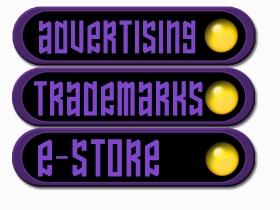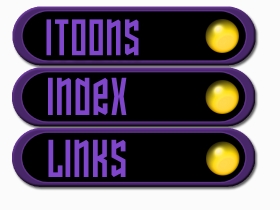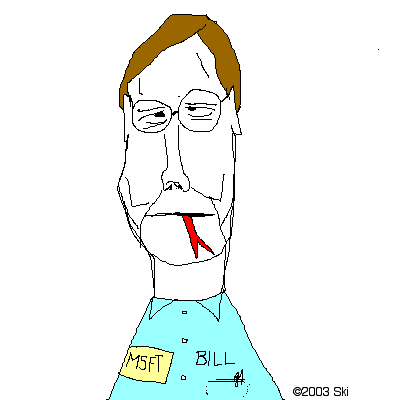|
|
   |
cyberbarf eStoreT-shirts, Caps, Mugs. Check for Specials!
cyberbarf
EXAMINE THE NET WAY OF LIFE
The Kamen Island
He may be the most creative inventor no average American has ever heard of. Dean Kamen has created more than 150 products and applications in the field of medical devices. As the American population ages, the entire system of health care coupled with longer life expectancy, is drawing more and more research dollars into new pharma-solutions. However, Kamen's approach has been to focus on medical devices with the unique aspect of applying principles of physics into practical needed solutions for people. He invented a portable infusion pump, which rapidly gained acceptance from such diverse medical specialties as chemotherapy, neonatology and endocrinology. Later, he modified his technology into other infusion devices, including the first insulin pump for diabetics. He has also invented a home dialysis machine, a new Stent and the IBOT Transporter, which is the ATV of the wheelchair. It can climb stairs, traverse sandy and rocky terrain and raise its user to eye-level with a standing person. He used his knowledge base to create another personal transport device, the Segway, which is now in production. It has been tested in postal delivery routes and warehouse enterprises.
The theme running through his creative products is independence. There is certain independence if a specialized transporter can help a disabled person move around their home without the help of nurses. There is a certain amount of independence in home health care products that cuts the ties of a patient to be hospitalized in order to receive treatment.
He may be considered the Einstein of his generation, but he has only 1/10th amount of patents to his name at this point in time. His mission of practical applications of physics to medical devices feeds a current and growing need in society. When there is a need, there is an opportunity to exploit it for profit and further expand its use to other markets.
The Segway is a good example. Using the dynamic elements of balance of the iBOT, the Segway as a personal transporter has the unique gyro-balance element that makes it as useful and easy to use as riding a bike. Price point is amazing; a Segway costs about the same as a high end, fast processing, graphics computer system. When an average person is drawn into a mental debate of upgrading their home computer system or buying a real cool personal adult-toy like a Segway, you know that Kamen has hit a real nerve in the American Dream of electronic gadgets and consumerism.
The Jobs Market
If there was a marketing hall of fame, one of the statues would be Steve Jobs. Jobs is the most influential marketeer of his generation. As a garage computer co-founder of Apple Computer, he dared to dream that individuals could use the highly expensive and complex machine called a computer for personal applications. The computer was the mountaintop confined to large business enterprises like the telephone company and universities. Xerox had the technology but could not implement a coherent business strategy to exploit this unknown market. As the CEO of Apple, he helped create a personal computer industry. He had the vision to strive for the best, the coolest, the easiest and the most stable computer platform research and development could hammer out. He was one of the lone leaders in the industry who kept the hardware and software components in mind when he would develop the next generation of applications, like desk top publishing. Wall Street never appreciated his self-promotion. When Apple got to critical mass, he was pushed aside for new leadership. Apple suffered from the niche player in the industry ever since that management shake-up. But Jobs continued to harbor his computer vision, with Next, the foundation of the current Mac OS. He continued toward fulfilling the idea of a integrated personal digital hub. Apple product design has been well received and quickly copied by competitors. When others faltered on the Internet distribution of music, iTunes found a way to succeed. On the side, he created Pixar, a computer animation studio, in partnership with Disney. Just as Walt Disney had the creative vision for cell animation, Jobs had the vision to create brand new computer-animation stories with rich features and character development that has lead to five of the most successful films of all time: Toy Story (1995); A Bug's Life (1998); Toy Story 2 (1999); Monsters, Inc. (2001); and Finding Nemo (2003). Pixar's five films have earned more than $2.0 billion at the worldwide box office to date.
He has become the new age messiah of the creative inner soul. His product base has been used by individuals to show off their creative independence: from desk top publishing, to writing/dictating their great American novel or screenplay, to dubbing their home movies with titles onto a CD as video Christmas cards, to creating their own soundtracks of their lives with the iPod and GarageBand products.
As American has dwindled away its hard heavy industrial base toward a service economy, the skill sets of computer engineering, computer graphics and the entertainment fields have the requirement for skilled tech-savvy and computer literate professionals. Jobs has marketed the passion for individual creativity into a very successful business platform. You can film your movie, edit it on a Mac, create a soundtrack, and show it at a film festival without hiring an agent or getting a studio development deal. The old entertainment industry of feudal lords and barons controlling scripts, content, stars and marketing cannot handle the prospects of people creating their own entertainment starring themselves.
Gates of Doom
If American Business has an emperor, his name would be William. William (Bill) H. Gates is chairman and chief software architect of Microsoft Corporation, the world's largest computer software company. Microsoft had revenues of US$32.19 billion for the fiscal year ending June 2003, and employs more than 55,000 people in 85 countries and regions. By the end of its fiscal year, Microsoft will have approximately $60 billion in cash reserves which is more than the Gross Domestic Product of Iraq in 2002. In college, Gates developed a version of the programming language BASIC for the first microcomputer - the MITS Altair. The focus on the computer operating system and its applications to all other programming needs was his controlling philosophy. .Just as the personal computer began to be recognized as important piece of office equipment, Gates realized that each computer sold needed an operating system and a suite of business software that would replace the existing paper office: typing became word processing; accounting ledgers became Excel spreadsheets; overhead transparencies became Powerpoint presentations. The installation of the Microsoft Windows operating system on the hundreds of thousands of business and personal computer boxes solidified Gates as the most powerful individual in the industry. As the dominant operating system in the world, Developers had to come to his OS in order to work in the Windows operating environment. As Microsoft became the gold standard in the OS field, he became a monopoly trying to vertically integrate all software under his company's ownership and control. It lead to several anti-trust suits and a global settlement of these tying arrangements which hurt competitor applications from being used by the average consumer. began developing software for personal computers.
But the computer industry is constantly changing. With an entire generation of computer programmers and techno geeks thinking of news ways to do simple tasks, Gates' dominance is always at risk. A new operating system would cut his market share of the bread and butter Windows OS. So, he keeps the major competitors close to the vest, investing money into Apple and Sun during their dark days, in order to keep those small platforms alive so that antitrust charges can have a defense. And Microsoft has been playing defense for years. Critics still pine that the current Windows program is still the old DOS engine wrapped in a silk GUI. But as the computer industry has matured, the users of computer hardware and software are more and more comfortable with their old systems. The need to upgrade has slowed in pace. Just like the automobile industry geared a generation to trade-in their cars every three years, today, a person holds on to the vehicle until at least their payments stop --- usually five years after signing on the dotted finance line.
Gates' must realize that software OS is not the long term annuity. He is seeking diverse ventures to supplement the Microsoft machine. His interest has been peaked in the theory of the use of technology in education and biotechnology. But businesses don't trust him. His management style was scorched earth. If his company did not develop a new technology or feature, it would make it its own. Harsh negotiator, extracting boss; he has made millionaires of coders, a generation of retired thirtysomethings.
But Gates' true legacy may be the Bill and Melinda Gates Foundation which has committed more than $3.2 billion to organizations working in global health; more than $2 billion to improve learning opportunities, including the Gates Library Initiative to bring computers, Internet Access and training to public libraries in low-income communities in the United States and Canada; more than $477 million to community projects in the Pacific Northwest; and more than $488 million to special projects and annual giving campaigns. The leverage of his wealth can direct change through the force and impact of a billion dollar foundation.

Photo Realist
Bert Monroy considers himself a Hyper-realist artist. His computer artwork looks almost photographic. Monroy is a Photoshop computer artist with the surreal talent of a realistic painter. The scope of his work shows the scope of the computer technology programs that can be harnessed for creative output.
Bert Monroy's work has also been featured in scores of books which include Making Art on a Macintosh, The Photoshop WOW Book, The Illustrator WOW Book, The Art of Digital Painting, The Grey Book, The Photoshop A to Z, Adobe Photoshop: A Visual Guide to the Mac which was published in 14 languages, Photoshop 4, published in Japan by Agosto and BNN, and Photoshop Channel CHOPS. He was a contributor on TechTV.
Samples of his work can be found at http://www.bertmonroy.com/index.htm.
The production of fine art with computers has been slower than the adaptation of computers to business applications. It may because art is a tactile sensory endeavor. Not just a visual representation; most painters, sculpturers, potters and muralists are covered with their materials in such a fashion that the media soaked fingertips is an extension straight to the canvas. It is a personal extension of mind to matter.
Computers are a stagnant, beige box. Different than a blank white canvas. A mouse does not have the feel of a conventional paint brush. The computer does not blend colors like a knife on a pallet. Computers have a flat display of 2D; life is seen and put onto canvas in layers, textures and brush strokes.
Painting programs have been developing new features to capture those real life elements of the painter. But one has to learn the program, master the controls before transmitting the creative picture onto the digital canvas. It takes a new thinking process in order to achieve extraordinary results.
In the 21st century, there will be a greater demand for graphic artists than lawyers or accountants. As a visual society, turning into a service dominated economy, graphic artists will be the cornerstone of the communication set in an aggressive marketing environment.
Monroy shows in his work of the beginning of the realist movement in computer art. Just as traditional painters had their movements, periods, and specialized schools that moved the traditional definition of art forward in our culture, Monroy may be considered a pioneer in this new digital era.
Brain Splatter
TELEPHONE HELL-- Last Month, we inferred a change in the cell phone system used at work. Well, that experiment in new phone technology blew up like a spectacular Indy car crash at 220 mph. The new protocol system, with all its bluetooth, Internet connectivity, would not capture a signal in any building. None in the loop. None in the suburbs. Unless you were standing outside, away from any line of sight obstruction, the phone was a useless holster belt accessory. So the new cells went back and the old cellphones were reactivated under a new phone payment plan.
TAX MANIA -- Wired reported that the tax code in the State of Florida has been interpreted recently to include a telecommunications tax for any network connection, including a personal home peer to peer network connection. Of course it is ridiculous to tax a cable connection from your two home computers. But local governments are starving for revenue like a cocaine junkie overdue for a score. Telecommunication taxes are the easiest taxes to hit citizens because it is a stealth tax. No one reads the itemization of their phone bills. (Take time out and look at the tax section of your local and long-distance phone bill. You may be shocked to see the percentage of state and local tax on each phone unit.) Remember, we are still paying the original telecom tax to the federal government -- the repayment of Spanish-American War bonds.
TRAILERS -- You don't have to go to the movie theatre anymore to see a new release. The Quicktime movie trailer site is uploading longer and more detailed movie trailers than I can remember. These mini-movies make paying for the real thing almost obsolete. You get the gist of the script, the characters, and probably the one or two best scenes in the hole movie. That's enough for the Monday morning water cooler chit-chat. It also shows the power of the QT system because the trailers are state of the art in streaming video and audio.
THE REASON -- The reason this site featured four creative individuals in the digital era was a simple decision on how to show that the map of computer technology is not a straight line but an intersecting spaghetti Interstate bowl of cross-over ramps and different directions. There are dominant media celebrities but there are quiet impressive artist-applicators. If you gaggle their names, the hits are impressive. So are their accomplishments. But there is an unwritten theme in each individual's approach to their craft: it comes back to the organic being. Whether it is medical technology for the disabled human, to powerful software that solves human failings, to the power of computer profits to uplift charitable works and biotechnology research, to the creativity that impresses the human mind.
NEW FEATURE -- In the transition to a new look cyberbarf site, we have added above in the link box an INDEX that shows the headlines of all past cyberbarf issues. Use the link to explore and navigate past issues on a topical basis.
Your support keeps this Site moving forward. Thank you!
Distribution ©2001-2004 pindermedia.com, inc.
All Rights Reserved Worldwide.
Webmaster Contact
cyberbarf
THIS SITE IS POWERED BY
pindermedia.com, inc.
Wasted Time for Wasted Lives™